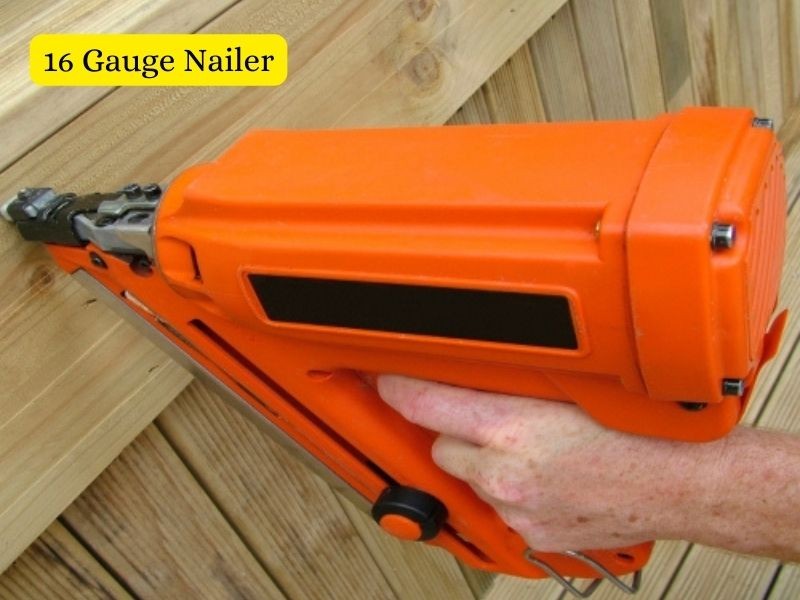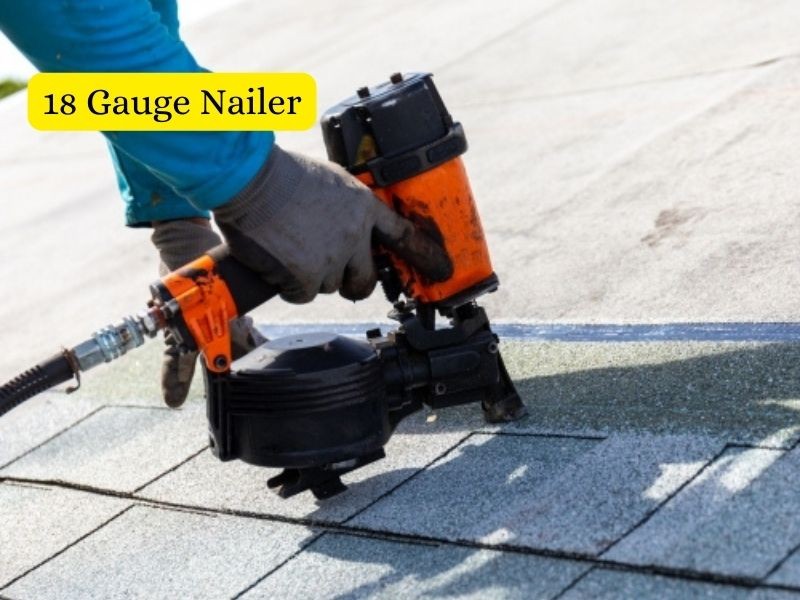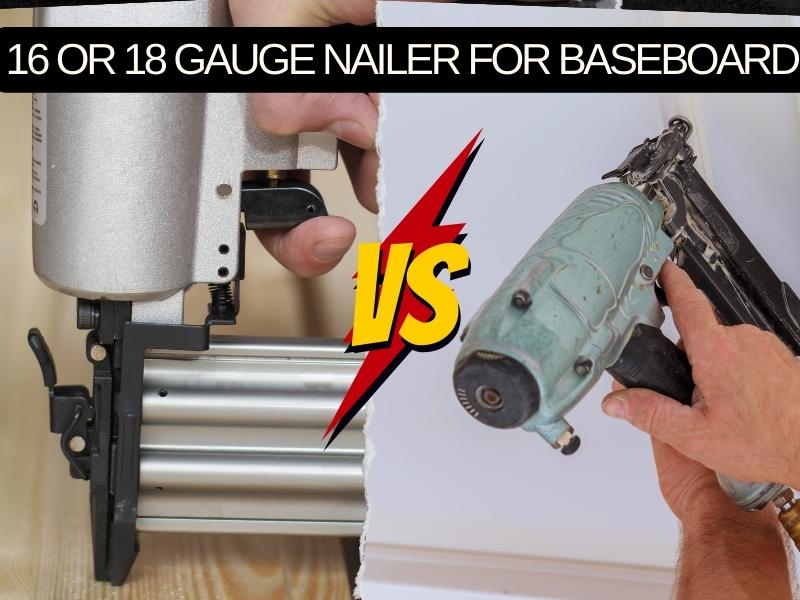Do you need to install baseboards but don’t want to use a hammer and nail? A baseboard nailer might be the solution for you. Nailers come in different sizes, and the size of the nailer will determine the size of the nails that it can use. The most common sizes are 16, 18, 20, and 22 gauge. The smaller the number, the larger the nail in terms of diameter. These tools make it easy to attach baseboards quickly and efficiently. In this blog post, we will discuss the two types of nail guns 16 or 18 gauge Nailer for Baseboard. We will also provide tips on how to use them properly so that you can get the best results.
16 Gauge Nailer:

A 16 gauge nailer is a tool that is used to drive nails into various materials. It is a handheld device that uses compressed air or electricity to power the nails into the material. The most common use for a 16 gauge nailer is to install trim and baseboards in homes.
There are a few things to consider when choosing a 16 gauge nailer:
1. Nail Size:
A nail’s size is the first thing to consider. Nails for a 16 gauge nailer come in lengths from ¾ inch to two inches. The most common length is one and a half inches.
2. Types of nails:
You should also consider the type of nails you will be using. The most common type of nails for a 16 gauge nailer are finishing nails.
3. Material type:
When choosing a 16 gauge nailer, it is important to consider what type of materials you will be using it on. If you plan on using it on a variety of materials, then you will need to choose a nailer that has adjustable settings.
4. Specific Need:
If you are only going to be using the nailer for one specific application, then you can choose a model that is specifically designed for that application. For example, there are 16 gauge nailers that are specifically designed for trim work.
18 Gauge Nailer:

18 gauge nailers are used to drive nails into wood or other materials. It is powered by either compressed air or electricity, and has a variety of features that make it useful for a variety of applications. The 18 gauge nailer is a versatile tool that can be used for a variety of projects.
Some of the features that make the 18 gauge nailer a versatile tool include:
- You can control how far the nail is driven into the material using the depth adjustment feature.
- A jam release lever that allows you to quickly and easily clear any jams that may occur.
- The no-mar tip prevents the nailer from damaging the material.
When choosing a 18 gauge nailer, keep the following factors in mind:
- Power Source:
Power is the first factor to consider. Compressed air nailers are the most powerful, but they require an air compressor. Electric nailers are less powerful, but they are more convenient as they do not require an air compressor.
- Size of Nails:
The size of the nails you are going to use is another factor to consider. The 18 gauge nailer can use nails from 16 to 22 gauge. If you plan on using larger nails, then you will need to choose a different size nailer.
- Specific Features:
It is also important to take into account the features that are important to you. Some features, like the depth adjustment and jam release lever, are standard on most 18 gauge nailers. Others, like the no-mar tip, are only found on some models.
16 or 18 gauge Nailer for Baseboard, Which is Better?
There are a few things to consider when deciding which gauge baseboard nailer to use.
1. Thickness of Baseboard:
Before anything else, the thickness of the baseboard must be considered. A nailer with an 18-gauge gauge is recommended if you’re working with a thin board. Nailers with 16 gauge are best for thicker boards.
2. Type of Wood:
Another consideration is the type of wood you’re using. Softer woods, like pine, are easier to dent and will require a thinner nail. Harder woods, like oak, can handle a thicker nail without splitting.
3. Finish Look:
Think about the finish you want. If you are planning on painting the baseboard, a 16-gauge nailer will leave bigger holes that will need to be filled. If you’re staining the wood, you will want to use a 18-gauge nailer for a cleaner look.
So, which is perfect 16 or 18 gauge Nailer for Baseboard? It really depends on your project. Consider all of the factors and make the best decision for your particular situation.
FAQs:
Q: How do you define a baseboard?
A: A baseboard is a piece of trim that is typically used to cover the space between the floor and the wall. Baseboards can be made from a variety of materials, such as wood, plastic, or metal.
Q: Why do people use baseboards?
A: Baseboards are often used for both aesthetic and functional purposes. Aesthetically, baseboards can help to create a clean and polished look in a room. Functionally, baseboards can help to protect the wall from damage caused by furniture or shoes.
Q: What are some common problems with baseboards?
A: One common problem with baseboards is that they can become scuffed or damaged over time. Another problem is that they can be difficult to clean, especially if they are made from a material like wood.
Q: What are some tips for installing baseboards?
A: One tip for installing baseboards is to use a level to make sure that they are installed evenly. You can also cut the baseboards to the desired size with a saw. The baseboards must also be nailed into place to ensure their stability.
Q: What is Gauge?
A: A gauge is a tool that is used to measure the thickness of a material. In terms of nailers, the gauge is used to determine the size of the nails that will be used.
Q: What is the difference between a 16-gauge and 18-gauge nail gun?
A: The difference between 16-gauge and 18-gauge nail guns is the size of the nails that they use. The diameter of 16-gauge nails is larger than that of 18-gauge nails. Therefore, 16-gauge nail guns are better suited to thicker materials.
Q: How should baseboards be cleaned?
A: One way to clean baseboards is to use a vacuum with a brush attachment. You can also use a damp cloth. If the baseboards are particularly dirty, you may need to use a cleaner specifically designed for cleaning wood.
Q: Do baseboards come in different colours?
A: Yes, baseboards come in a variety of colors. Some baseboards are stained to match the color of the wood, while others are painted. You can also find baseboards made from materials that are already a specific color, such as white or black.
